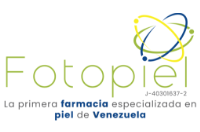PENTOXIFILINA EN EL TRATAMIENTO DE LA PSORIASIS: UN ESTUDIO PROSPECTIVO
Palabras clave:
PSORIASIS, PENTOXIFILINA,Resumen
La favorable respuesta de la psoriasis al uso de
inmunosupresores sugiere fuertemente un defecto específico
en el sistema inmunitario como mecanismo fisiopatológico de
la enfermedad. En la psoriasis existe evidencia de cambios
en la producción de citoquinas por los queratinocitos y otras
células inmunocompetentes en la piel, especialmente el
aumento de la producción de Interleukina-2 (IL-2), Interferon-y
(IFN-y) y Factor de Necrosis Tumoral-a (TNF-(x), expresando
un perfil de citoquinas tipo 1. De lo anteriormente expuesto, :
se plantea como meta terapéutica la inhibición de la
producción de IL-2, TNF-a e IFN-y y de su acción a nivel de
las células T y queratinocitos. El medicamento que más se
aproxima a estas funciones es la Pentoxifilina (1-(-5-
oxyohexil)-3,7 dimethylxantine, 1-(-5-oxyohexyl)
theobromine). En el presente estudio se encontró que la
reducción : de los signos clínicos de psoriasis fue
significativamente mayor en el grupo tratado con Pentoxifilina
que en el grupo control. La infiltración de las lesiones el signo
que más intensamente se redujo, seguido esto por la
reducción del eritema en el mismo grupo. No se observó
influencia de la edad, el sexo y el tiempo de evolución de la
psoriasis en la respuesta al tratamiento con Pentoxifilina.
Dados los mecanismos fisiopatológicos involucrados y los
resultados obtenidos, surge la posibilidad de incluir la
Pentoxifilina en arsenal terapéutico contra la psoriasis.
ABSTRACT
The favorable response of psoriasis to immunesuppressors
sugests a specific defect in the immune system as
physiopathologic mechanism in its production. There is
evidence in psoriasis of changes in the production of
cytokines by the keratinocytes, specially the increase in the
production of IL-2, IFN-y and TNF-a, expressing a cytokine
profile type 1.
The therapeutic goal would be the inhibition of the production
of TNF-a, IFN-y and IL-2, and their action on T cells and
keratinocytes. The drug approaching most closely is
Pentoxifilline (1-(-5-oxyohexyl)3,7 dimethylaxantine, 1-(-
5oxyohexyl) theobromine). The results in this study indicate
that all clinical signs of psoriasis were significantly reduced in
those patients treated with Pentoxyfiline compared with the
control group. The infiltration was the mostly reduced clinical
sign, followed by the reduction of the erytheme. The
therapeutic response to Pentoxyfilline was not influenced by
thp age, sea. or evolution time of psoriasis. Given the
immunological mechanisms implied and the results obtained
in the present study, the possibility treat psoriasis with
Pentoxyfilline is raised.
Descargas
Número
Sección
Licencia
Publicado por la Sociedad Venezolana de Dermatología Médica, Quirúrgica y Estética







